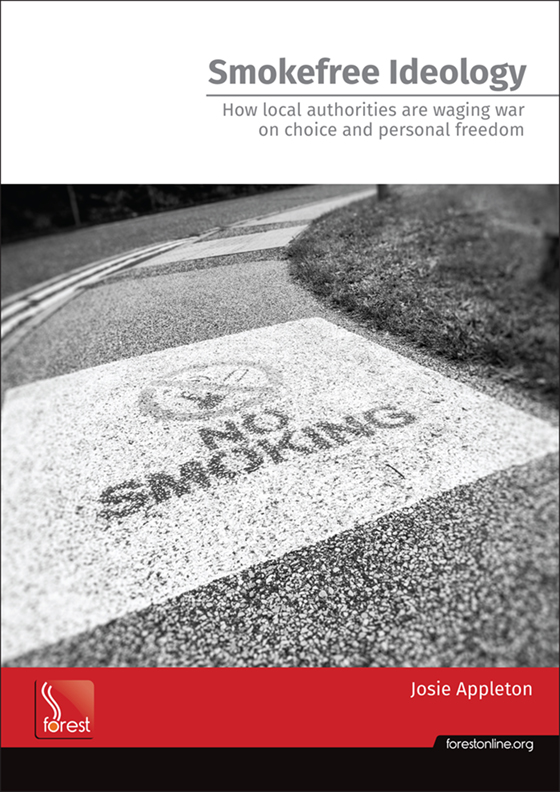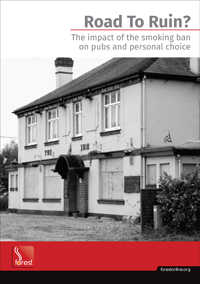Disgruntled passenger to Cunard: "Smokers are treated like pariahs"
 Monday, July 18, 2016 at 11:00
Monday, July 18, 2016 at 11:00 John Staddon is professor emeritus at the Department of Psychology and Neuroscience at Duke University in the United States.
He's also honorary visiting professor at the University of York.
A couple of years ago John wrote a book, published by the University of Buckingham, entitled Unlucky Strike: The Science, Law and Politics of Smoking.
It included illustrations by his friend (and Forest supporter) David Hockney and I reviewed it here.
To help promote the book Forest organised a speaker meeting, Why government should leave smokers alone.
Shortly after that John and his wife joined us at The Freedom Dinner and we have kept in touch, occasionally swapping emails.
A couple if weeks ago John sent me a copy of a letter he had written to the CEO of Cunard following a recent cruise. It reads:
I have just returned from a generally enjoyable trip on the remastered QM2. It is my third QM2 trip, but it may be my last. The physical facilities, especially the library, were excellent; the service and food very good. The talks and entertainment were generally excellent cruise fare.
Those are the good things. But there were also bad things. There were computer problems which caused many people to wait hours before they could embark. You probably know about these.
But there are two other chronic problems that you may not be aware of. First the security in Southampton was intrusive and obsessive to a ridiculous degree. As a result I temporarily lost my watch, which was demanded by a robotic security officer – I say ‘robotic’ because he used so little judgement that he could have been replaced by a machine.
In the course of my efforts to find my watch I spoke with the security officer. When I questioned the excess of the whole security procedure – worse, in my experience, than at most airports – he proudly proclaimed “The rules are the same!”
But of course the risks are NOT the same. The QM2 is unlikely to be threatened by a watch, even an explosive one. You don’t check people’s watches and walking sticks when they go into a theater or get on a train. The QM2 is no different. The risks are different so should be the security procedures, and on most cruise ships, they are.
Being treated in a reasonable and civilized way is one reason that people choose sea travel over air. Cunard is throwing this advantage away.
Second, the treatment of smokers, especially cigarette smokers, is disgraceful, even offensive. Smokers are now treated even worse than on previous voyages of the QM2. (And worse than the crew, apparently.)
Cigarette smokers (I am an occasional cigar smoker) have no heated, covered area where they can smoke. It would be more honest if Cunard announced that their ships are all non-smoking rather than intimidate and insult cigarette smokers in the way that you do.
On this last trip passengers were regaled with several entertainments celebrating Cunard’s distinguished history. No-one could fail to notice that smoking was treated for most of that history as a civilized part of travel on a Cunard ship. Now smokers are treated as pariahs. Disgraceful!
The sensible and decent thing would be to designate the large and often largely empty Commodore Lounge, which is adjacent to the diminutive Churchill cigar room, as a smoking area.
I generally enjoyed my trip, but I will not be signing up again unless Cunard does something about these two very unpleasant features of your travel experience.
No word yet on Cunard's response but I'll keep you posted.
In the meantime I'm booked on another Cunard ship, the Queen Victoria, next month.
One of the ports we're due to visit just happens to be in Turkey. In the circumstances you'd hope Cunard might turn a blind eye to nervous passengers lighting up in no-smoking areas!
PS. John Staddon is right to highlight the long history of smoking aboard Cunard ships.
Last year, at the TabExpo Congress in London, maritime historian Brian Hawley gave a very interesting if nostalgic presentation entitled 'Smoking tales on the high seas'.
Hawley also has a hand in this fascinating feature, Queen Mary and Hindenburg: A Detailed Comparison, which reveals that not only were there smoking rooms on both vessels, "passengers could smoke virtually anywhere on Queen Mary":
While the First Class smoking room was an especially elegant place for a man to enjoy a cigar, pipe, or cigarette, passengers were free to smoke in their cabins, in the dining room, and almost everywhere else.
In contrast:
Because Hindenburg was inflated with highly-flammable hydrogen, smoking was strictly limited, and passengers were required to hand all matches and lighters to a steward before being allowed to board.
But Hindenburg’s designers knew that a smoke-free airship was not likely to appeal to the nicotine-addicted travelers of the day and came up with an ingenious way to allow passengers to satisfy their cravings without destroying the airship; a pressurized smoking room entered through an airlock.
The air pressure in the smoking room was kept higher than ambient pressure, so that no leaking hydrogen could enter the room, and a steward carefully monitored the door to make sure that no passenger left with a lighted cigarette, cigar, or pipe.
Well worth a read.











Reader Comments (3)
Dear Mr Clark
Why don't cruise ship operators with large fleets designate one or more ships as smoking ships in their entirety - i.e. like it used to be in the olden days?
If they are entirely crewed by smokers and tolerant non-smokers, there cannot be any basis for the fraudulent elf'n'safety second hand smoke nonsense.
I suspect that such cruise ships would be extremely popular with some 20% of their customer base, and considerably more when their non-smoking partners are included.
Perhaps this suggestion could be put to Cunard by at least two of their customers.
DP
This is an excellent overview of the senseless abuses caused by intolerance toward smokers. Smoking in designated areas should be allowed on all cruise ships. After all there is actually no risk to others from second hand smoke. On my part, I have avoided cruises since the draconian smoking bans have been implemented and will do so until the accommodate all smokers (cigarettes and cigars alike).
Parts of that article comparing the Hindenburg with the Queen Mary, read just like the propaganda view from Germany in 1936, perhaps lifted from the Hindenburg publicity:
"... ship’s elegantly-dressed passengers is that they all smelled very much like an ashtray"
"a smoke-free airship was not likely to appeal to the nicotine-addicted travelers of the day"
Sea sickness was a huge problem because ocean liners did not have stabilisers back then. I wondered how they worked so I looked in Wikipedia where it was noted that:
"Stabilizers can reduce a ship's speed due to an increase in hydrodynamic drag. This increases fuel consumption and CO2 emissions."
As Einstein supposedly said: "Two things are infinite, the universe and human stupidity, and I am not yet completely sure about the universe."